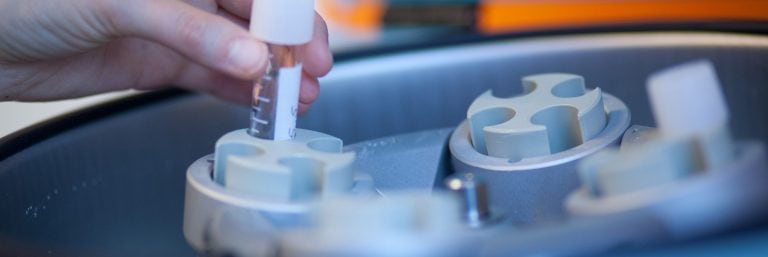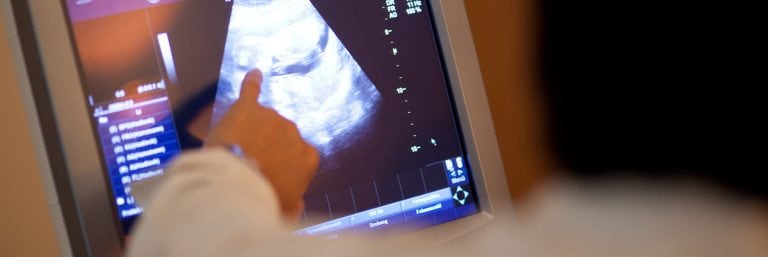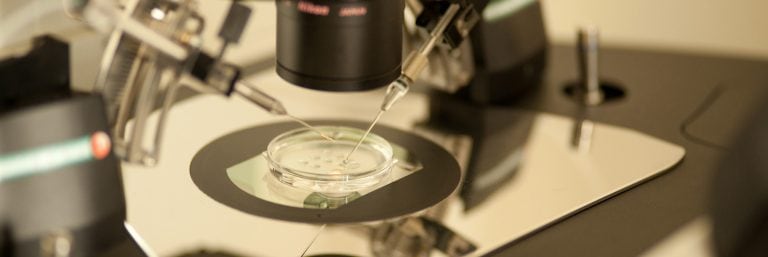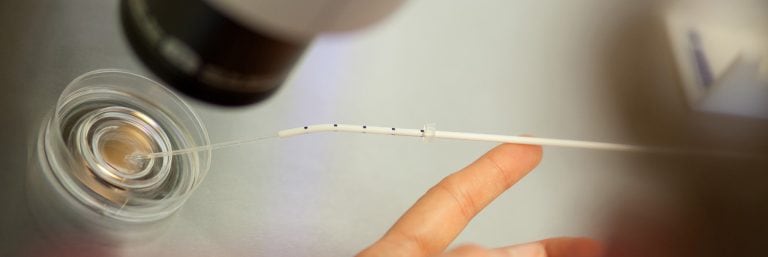Fallopian tube diagnostics
If the partner’s spermiogram is not or only slightly restricted, it may be useful to check the patency of the fallopian tubes.
There are two main examinations to determine the patency of the fallopian tubes:
- the HSSG (Hystero-Salpingo-Sonography) contrast medium examination (e.g. with Echovist®)
- Chromolaparoscopy (dye flushing during laparoscopy – laparoscopy)
- HSG
HSSG (Hystero-Salpingo-SonoGraphy), Echovist® Examination
The advantage of the contrast medium examination is that this examination can be performed without anesthesia. In the hands of an experienced examiner, this method is well tolerated by the patient and is perceived as merely unpleasant. An anesthesia is not necessary.
The examination is performed on the gynecological examination chair a few days before the expected ovulation. After disinfecting the cervix, a thin plastic catheter (tube) is inserted into the uterine cavity. A sugar solution is injected through this catheter, the flow of which (via the fallopian tubes) can often be seen very clearly in the ultrasound image.
Occasionally, however, one can only “conclude” that they are continuous. This occurs when the fallopian tubes themselves cannot be seen, but the contrast medium flows into the free abdominal cavity.

Additional information can be obtained if a saline solution is injected prior to the contrast medium examination, through which abnormalities in the area of the uterine cavity can be detected (so-called hydrosonography). Depending on the experience of the examiner and the ultrasound technique, the informative value of this examination is considerably good.
“In the positive case, the predictive value of such an examination is at over 90%, which is quite high.”
(Keck, Neulen and Breckwoldt: Endocrinology, reproductive medicine, andrology, 1999 Thieme Publishing House).
Laparoscopy
The most comprehensive information about the condition of the internal genitals is obtained through laparoscopy. On one side, the fallopian tubes can be flushed with contrast medium or color (chromopertubation). On the other side, important information about the presence of adhesions, inflammatory changes and endometriosis is obtained. In an appropriately equipped center, the adhesions found can be loosened and endometriosis lesions can be professionally removed.
Since this is a surgical procedure, laparoscopy should only be performed if the results of the examination indicate a consequence for the further therapy of the couple. If, for example, the spermiogram is so limited that IVF or ICSI is required anyway, such an intervention is pointless and therefore contraindicated.
HSG (hysterosalpingogram)
Before the development of Echovist®, which made it possible to visualize the fallopian tubes using ultrasound, HSG was a common examination method. The procedure is similar to the previously described HSSG, except that X-rays and X-ray contrast medium are used. For this reason, the HSSG with Echovist has spread rapidly, at least in Europe, as it can prevent X-rays, which are potentially harmful to the ovaries. HSSG is still widely used today in the USA, the Middle East, Latin America and Africa.




